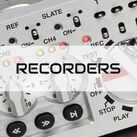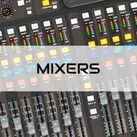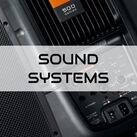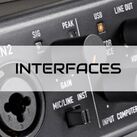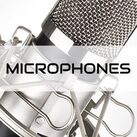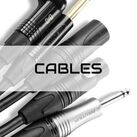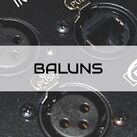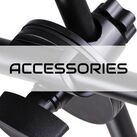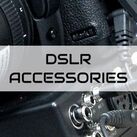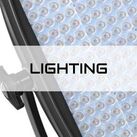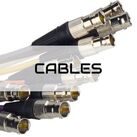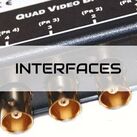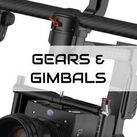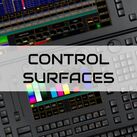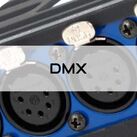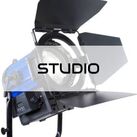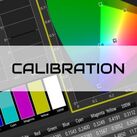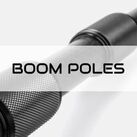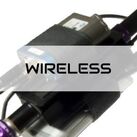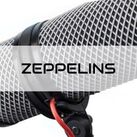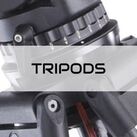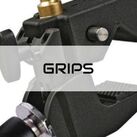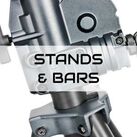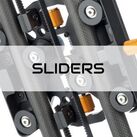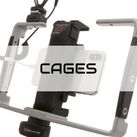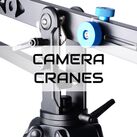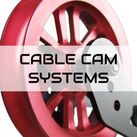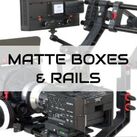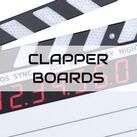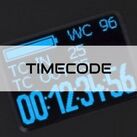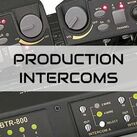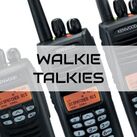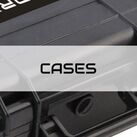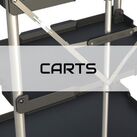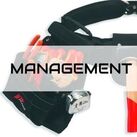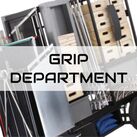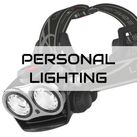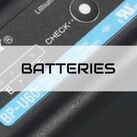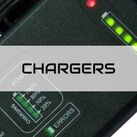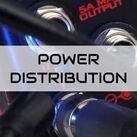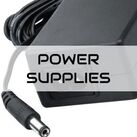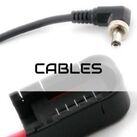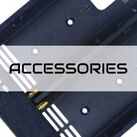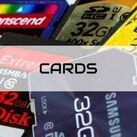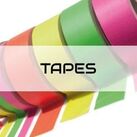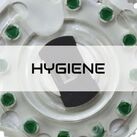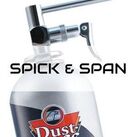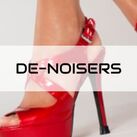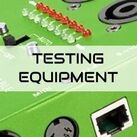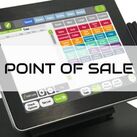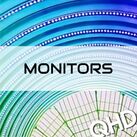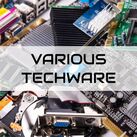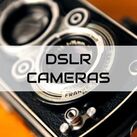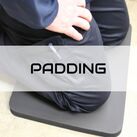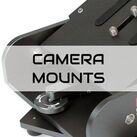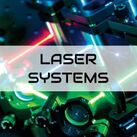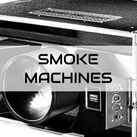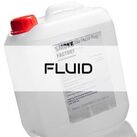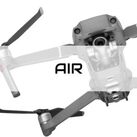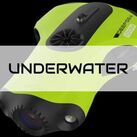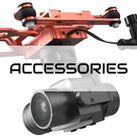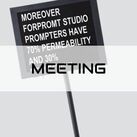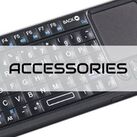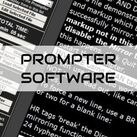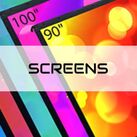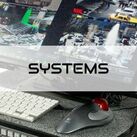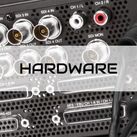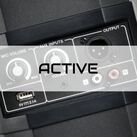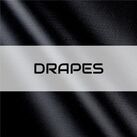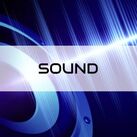021 201 7250 | sales@progearsa.co.za
The Yamaha QL5 64-channel digital mixer is packed with many of the core features of their acclaimed CL Series, making it your ideal compact all-in-one solution for mixing, processing, and routing audio. Loaded with premium internal processors, including stellar-sounding EQ and dynamics tools developed in cooperation with Rupert Neve Designs, the QL5 will bring out the best sonic character in any source. With built-in automixing functionality, Dante network support, and remote control via your tablet or computer, the Yamaha QL5 is the perfect sound reinforcement solution for small- to medium-scale live sound, corporate speech events, broadcast, and more!
QL series consoles feature circuitry and components that have been designed and selected with the utmost care, achieving outstanding audio purity from input to output. With that solid sonic foundation it becomes possible to take full advantage of built-in premium internal processors such as the Portico 5033/5043 created in cooperation with Rupert Neve, to shape and create as required. For a wide range of speech applications built-in automatic mixing functionality from Dan Dugan Sound Design provides optimum channel balance while allowing the operator to concentrate fully on optimizing the overall sound.
Full creative freedom can only be achieved when the sonic foundation is accurate, uncolored, and faithful to the source. The same pure, natural sound that is a highly regarded feature of the CL series is achieved in the compact QL series consoles as well. Every detail, from mechanical construction through port location, power supply, grounding, and individual components has been painstakingly analyzed and brought together in a system that affords extraordinary audio quality. Noise that can affect digital mixer performance in a number of ways has also been thoroughly scrutinized and effectively eliminated. Because it can affect AD/ DA converter performance, system clock jitter has been subject to detailed analysis and optimized by revising the internal FPGA layout and rerouting the clock signal. All of these details combine to realize performance that not only passes the strictest scientific tests, but also satisfies the critical ears of some of the most demanding sound engineers in the business.
Yamaha QL5 Digital Mixer Features at a Glance:
- Premium internal processors simulate classic studio gear and more
- Rupert Neve-designed EQ and dynamics for studio-quality sound
- Automixing functionality via the Dan Dugan automatic mixer
- Dante network support lets you create complex system designs
- Remote control via tablet or computer lets you go deep into your mix
- Tons of scene memory, customization options, and more
Pure, natural sound and powerful processing
In order to produce great mixes, audio engineers need to have uncolored, natural sound as a starting point. That's why the Yamaha QL5 features top-shelf circuitry and components — to provide you with pristine audio from input to output. And when you're ready to get creative, the QL5's powerful Virtual Circuit Modeling (VCM) technology effectively captures various pieces of analog gear right down to their individual components (including models influenced by the 1176, LA-2A, and EQ-1A), injecting your mix with an abundance of authentic-sounding analog vibe. Of course, the crown jewel of the QL5's analog emulations is its VCM versions of the Rupert Neve Designs Portico 5033 EQ and 5043 compressor, developed in collaboration with Rupert Neve Designs! You also get Yamaha REV-X reverb processors and a graphic EQ for your buses.
- Top-shelf circuitry and components
- Virtual Circuit Modeling (VCM) analog emulations
- Modeled Rupert Neve Designs Portico 5033 EQ and 5043 compressor
- Yamaha REV-X reverb, graphic EQ, and more
Revolutionary Dan Dugan automatic mixer
The Yamaha QL5 comes armed with Dan Dugan Sound Design's revolutionary automatic microphone mixing technology. This remarkable processor, which can be loaded into up to 16 channels simultaneously, lets you automatically optimize your microphone gain distribution for speech applications. The result is smooth, natural gain control — the QL5 almost mixes itself! This is a lifesaver for a non-engineer volunteer who runs live sound in a house of worship or at a community event. This is especially useful in non-scripted situations, as it allows you to concentrate on the balance rather than having to chase talkers on the faders.
- Dan Dugan Sound Design's automixing technology
- Up to 16 channels of Dugan Speech System
- A lifesaver for non-engineer sound volunteers
Refined control for smooth operation
When you're running live sound, you've got to move quickly! Well, Yamaha took this into account, making visibility and usability hallmarks of the QL5's design. First of all, the QL5's large, easy-to-navigate touch-panel display makes working in the dark child's play. You'll love the intuitive design of the QL5's Selected Channel interface, which provides you with a comprehensive overview of the parameters available to you for the channel that you're working on. On top of that, you get remarkably comfortable faders and a straightforward Touch-and-Turn knob, which make operating the QL5 a phenomenally smooth, efficient experience. You also get remote control and offline setup capability via your iPad or computer, adding even more refinement to an already state-of-the-art operating environment.
- Straightforward Touch and Turn knob
- Intuitive Selected Channel interface
- Comfortable sculpted faders and knobs
- Remote control and offline setup capability
Link it up with built-in Dante networking
Network capability is essential in today's live sound applications, and the Yamaha QL5 has everything you need. By utilizing the widely-implemented Dante networking protocol, the QL5 is able to interface with other Dante-compatible devices to create systems of just about any scale or complexity. Additionally, the QL5's "Port to Port" feature allows its inputs and outputs to be used as elements in a larger system, providing you with unprecedented routing capabilities for front-of-house and monitor consoles. And you'll never have to worry about gain complications disrupting the balance of your mix, as the QL5's Gain Compensation feature ensures that the total gain sent out via the network remains constant, regardless of which device a signal is routed through. In other words, crank up the analog gain on a stage box, and Gain Compensation will automatically turn down the volume on the network so nobody hears the volume change.
- Widely implemented Dante networking protocol
- Expand your rig with the Port to Port feature
- Automatic Gain Compensation between devices
Expand your system with mini-YGDAI slots
The Yamaha QL5 gives you plenty of opportunities for expandability, thanks to its mini-YGDAI expansion slots, which can accept more than 30 types of expansion cards. You can also connect multiple QL5s together via I/O cards such as the MY32-AE, to create powerful systems that offer massive channel counts. The QL5 can also be cascaded to other Yamaha digital consoles such as their CL Series, giving you unprecedented flexibility. On top of that, you can use a separately sold MY8-LAKE expansion card to infuse your QL5 with Lab.gruppen's Lake Processing technology — Mesa EQ, Ideal Graphic EQ, Linear Phase EQ, and other processing features that are capable of fine-tuning your system in a wide variety of environments.
- Highly versatile mini-YGDAI expansion slots
- Connect multiple QL5s together for massive channel counts
- Cascade the QL5 with other Yamaha digital consoles
- Compatible with Lab.gruppen's Lake Processing technology
Two-track recording and multitrack options
If you're wanting to record your live shows, the Yamaha QL5 makes it easy. You can either make a 2-track recording straight to a standard USB flash drive (in MP3 format), or you can create a full-blown multitrack recording with Nuendo Live or your DAW choice via Dante. Multitrack recording is great for performing "virtual sound checks" when the band isn't available, and for making professional recordings of your live shows. On top of that, you can play back sound files (in MP3, AAC, or WMA format) from your flash drive, for convenient playback of background music or sound effects without the need for extra playback equipment.
- Record two tracks directly to a flash drive
- Play back files from a flash drive
- Create multitrack recordings with your DAW via Dante
- Up to 64 tracks can be recorded simultaneously
Tight iPad and computer integration
Thanks to Yamaha's state-of-the-art QL StageMix iOS app, it's possible to mix on the QL5 remotely using your iPad. Imagine being able to mix from the audience's or performer's positions — you can ensure that your show sounds great in every corner of the venue! You also get support stays that will support an iPad on the left side of the QL5's panel, sleekly integrating the iPad into the QL interface. You can also use the QL Editor app, which is compatible with both Macs and PCs, to set up the QL5's parameters via your computer, both on- and offline. You can use the QL Editor to conveniently manage scene and patch list data, for example, and keyboard entry capability can be a huge advantage for typing channel names, etc. One thing's for sure: both of these innovative apps are great timesavers!
- Two amazing ways to access your settings
- QL StageMix allows you to mix remotely with your iPad
- QL Editor lets you set your parameters via your computer
Loaded with features and performance.
Optimized for live sound, the QL5 provides you with up to 300 scene memories, up to 1000ms of delay on its inputs and outputs, ample EQ and dynamics processing, 32 DCA groups, eight mute groups, 12 user-defined keys, multiple user key sets, a 5-in/5-out GPI interface, and more. The perfect sound reinforcement solution for small- to medium-scale live sound, corporate speech events, and broadcast, the Yamaha QL5 is a phenomenal 64-channel digital mixer!
- Up to 300 scene memories
- Up to 1000ms of delay on its inputs and outputs
- Ample EQ and dynamics processing
- 32 DCA groups
- 8 mute groups
- 12 user-defined keys
- Multiple user key sets
- 5-in/5-out GPI interface
- Onboard help file
- Type:Digital
- Channels:64 mono, 8 stereo mixing channels
- Inputs - Mic Preamps:32 x XLR
- Phantom Power:32 channels
- Talkback:Yes
- Inputs - Digital:2 x EtherCon Cat5 (Dante Primary, Secondary)
- Outputs - Main:16 x XLR (Omni)
- Outputs - Digital:1 x XLR (AES/EBU), 2 x EtherCon Cat5 (Dante Primary, Secondary)
- MIDI I/O:In, Out
- Data I/O:Ethernet
- Channel Inserts:Yes
- Busses/Groups:16 x Bus
- I/O Expansion Slots:2 x Slots (MY expansion)
- Headphones:1 x 1/4"
- Word Clock:In, Out
- Faders:34 x 100mm Throw
- EQ Bands:4-band Parametric
- Effects:Yes
- Height:10.7"
- Depth:22.2"
- Width:32.6"
- Weight:48.1 lbs.
- Manufacturer Part Number:QL5
Technical Specification of QL/CL
|
| QL5 | QL1 | CL5 | CL3 | CL1 | |
| Mixing Capacity | Input Mixing Channels | 64 mono + 8 stereo | 32 mono+ 8 stereo | 72 mono + 8 stereo | 64 mono + 8 stereo | 48 mono + 8 stereo |
| Mix Buses | 16 | 24 | ||||
| Matrices | 8 (Input to Matrix supported) | 8 (Input to Matrix supported) | ||||
| Stereo Bus | 1 | 1 | ||||
| Mono | 1 | 1 | ||||
| Cue | 1 (Second Cue Bus supported in QL V4.0 or later) | 1 (Second Cue Bus supported in CL V4.0 or later) | ||||
| Local Connectors | Analog Inputs | 32 | 16 | 8 | ||
| Analog Outputs | 16 | 8 | 8 | |||
| MY Slots | 2 | 3 | ||||
| Dante I/O | Primary / Secondary | Primary / Secondary | ||||
| Digital Out | 1 (AES/EBU) | 1 (AES/EBU) | ||||
| GPI | 5 in / 5 out | 5 in / 5 out (CL V1.11 or later) | ||||
| Word Clock I/O | Yes | Yes | ||||
| MIDI I/O | In / Out | In / Out | ||||
| External Redundant PSU | No | Optional PW800W | ||||
| Meter Bridge | No | Output meter built-in | Optional MBCL | |||
| Ethernet | Yes | Yes | ||||
| AC Inlet | V-Lock Type | V-Lock Type | ||||
| Scene Memory | Number of Scenes | 300 | 300 | |||
| Recall Safe | Yes | Yes | ||||
| Focus Recall | Yes | Yes | ||||
| Fade Time | Yes (0s ~ 60s) | Yes (0s ~ 60s) | ||||
| Preview | Yes | Yes (CL V1.51 or later) | ||||
| Selective Load / Save | Yes | Yes (CL V1.7 or later) | ||||
| Tactile Control Keys | No (on-screen) | Yes | ||||
| Input Channel Functions | Gain Compensation | Yes | Yes | |||
| Digital Gain | Yes (-96dB ~ +24dB) | Yes (-96dB ~ +24dB) | ||||
| ATT | -96dB ~ 0dB | -96dB ~ 0dB | ||||
| HPF | 20Hz ~ 600Hz, -6 or -12dB/oct Selectable | 20Hz ~ 600Hz, -6 or -12dB/oct Selectable (CL V1.51 or later) | ||||
| PEQ | 4 Band Full PEQ | 4 Band Full PEQ | ||||
| Dynamics 1 | Gate / Ducking / Compressor / Expander (Key-in Filter on the Compressor and Expander in QL V4.0 or later) | Gate / Ducking / Compressor / Expander (Key-in Filter on the Compressor and Expander in CL V4.0 or later) | ||||
| Dynamics 2 | Compressor / Compander-H / Compander-S / De-esser | Compressor / Compander-H / Compander-S / De-esser | ||||
| Input Delay | Yes (0ms ~ 1000ms, frame delay support in QL V3.0 or later) | Yes (0ms ~ 1000ms, frame delay support in CL V3.0 or later) | ||||
| Pan | CENTER NOMINAL or LR NOMINAL for monaural input channels in QL V3.1 or later | CENTER NOMINAL or LR NOMINAL for monaural input channels in CL V3.1 or later | ||||
| DCA Group | 16 (Output DCA support in QL V3.0 or later) | 16 (Output DCA and DCA Roll-Out support in CL V2.0 or later, Scrollable DCA Roll-Out support in CL V4.0 or later) | ||||
| MUTE Group | 8 | 8 | ||||
| Number of Inserts | 2 | 2 (CL V2.0 or later) | ||||
| Direct Out | Yes | Yes | ||||
| Output Channel Functions | PEQ | 4 Band Full PEQ | 4 Band Full PEQ | |||
| Dynamics 1 | Compressor / Expander / Compander-H / Compander-S | Compressor / Expander / Compander-H / Compander-S | ||||
| MUTE Group | 8 | 8 | ||||
| Number of Inserts | 2 | 2 (CL V2.0 or later) | ||||
| Premium Rack | Number of Premium Racks | 8 | 8 | |||
| Mountable Device | RND Portico5033 / RND Portico5043 / U76 / Opt-2A / EQ-1A / Dynamic EQ / Buss Comp 369 (QL V3.0 or later) / MBC4 (QL V4.0 or later) | RND Portico5033 / RND Portico5043 / U76 / Opt-2A / EQ-1A / Dynamic EQ / Buss Comp 369 (CL V3.0 or later) / MBC4 (CL V4.0 or later) | ||||
| Effect Rack | Number of Effect Racks | 8 | 8 | |||
| Number of Effect Programs | 54 | 54 | ||||
| Mountable Device | Effect / 31BandGEQ / Flex15GEQ / 8Band PEQ (QL V3.0 or later) | Effect / 31BandGEQ / Flex15GEQ / 8Band PEQ (CL V3.0 or later) | ||||
| GEQ Rack | Number of GEQ Racks | 8 | 16 | |||
| Mountable Device | 31BandGEQ / Flex15GEQ / Dugan Automixer / 8Band PEQ (CL V3.0 or later) | 31BandGEQ / Flex15GEQ / Dugan Automixer (CL V3.0 or later) / 8Band PEQ (CL V3.0 or later) | ||||
| Dante | Number of I/O Channels | 64 in / 64 out | 32 in / 32 out | 64 in / 64 out | ||
| Dante Patch from Console | Yes | Yes | ||||
| Recording | USB Memory Recording | Yes | Yes | |||
| DVS Recording | Yes (DVS and Nuendo Live bundled) | Yes (DVS and Nuendo Live bundled) | ||||
| Broadcast Functions | 5.1 Surround Panning | Yes (QL V3.0 or later) | Yes (CL V3.0 or later) | |||
| Surround Monitor | Yes (QL V3.0 or later) | Yes (CL V3.0 or later) | ||||
| Mix Minus | Yes (QL V3.0 or later) | Yes (CL V2.0 or later) | ||||
| L-Mono / R-Mono / LR-Mono | Yes (QL V3.0 or later) | Yes (CL V3.0 or later) | ||||
| Monitor | Solo Mode | Yes (QL V4.0 or later) | Yes (CL V4.0 or later) | |||
| Second Cue Bus | Yes (QL V4.0 or later) | Yes (CL V4.0 or later) | ||||
| Oscillator | Sine Wave 1ch / Sine Wave 2ch (QL V3.0 or later) / Pink Noise / Burst Noise | Sine Wave 1ch / Sine Wave 2ch (CL V3.0 or later) / Pink Noise / Burst Noise | ||||
| Other Functions | Port to Port | Yes | No | |||
| RTA | Yes (QL V3.0 or later) | Yes (CL V3.0 or later) | ||||
| Output Port Delay | Yes (0ms ~ 1000ms, frame delay support in QL V3.0) | Yes (0ms ~ 1000ms, frame delay support in CL V3.0) | ||||
| Cascade | Yes | Yes (via MY slots) | ||||
| User Level | Yes | Yes | ||||
| Help File | Yes | Yes (CL V1.51 or later) | ||||
| Channel Link | Yes (Output Channel Link support in QL V3.0 or later) | Yes (Output Channel Link support in CL V3.0 or later) | ||||
| Channel Copy/Move | Yes | Yes | ||||
| Control & Monitoring | Shure ULXD4D/ULXD4Q (QL V4.0 or later) | Shure ULXD4D/ULXD4Q (CL V4.0 or later) | ||||
| User Interface | Display | 10 inch Touch Panel | 10 inch Touch Panel | |||
| Centralogic Section | No | Yes | ||||
| Faders | 32 + 2 | 16 + 2 | 16 + 8 + 8 + 2 | 16 + 8 + 2 | 8 + 8+ 2 | |
| Selected Channel Encoders | Gain, HPF, PEQ (controls for a selected band), Dynamics 1/2(Threshold only), Pan | Gain, HPF, PEQ (controls for 4 bands), Dynamics 1/2(Threshold only), Pan, Mix/Matrix Sends | ||||
| Channel Encoder | No | Yes (for Gain, Send Level, or an assigned parameter) | ||||
| Channel Name / Color Display | Yes | Yes | ||||
| Custom Fader Banks | Yes (customized for all faders in a lump, | Yes (customized for each fader section) | ||||
| User Defined Keys | 12 (x 4 banks in QL V3.0 or later) | 16 (x 4 banks in CL V3.0 or later) | ||||
| User Defined Knobs | 4 (on-screen) | 4 | ||||
| Touch and Turn Knob | Yes | Yes (using a User Defined Knob) | ||||
| Monitor Level Knob | Yes (on-screen) | Yes | ||||
| Wooden Arm Rest | No | Yes | ||||
| iPad Stay | Yes | No | Yes | No | ||
| Rack-mounting | No | Yes | No | |||
| Software | Editor | QL Editor (Win/Mac, CSV files import/export in QL Editor V4.0.0 or later) | CL Editor (Win/Mac, CSV files import/export in CL Editor V4.0.0 or later) | |||
| StageMix | QL StageMix (iPad app) | CL StageMix (iPad app) | ||||
| MonitorMix | Yes (QL V4.00 or later) | Yes (CL V4.00 or later) | ||||
| Console File Converter | Yes (Win/Mac) | Yes (Win/Mac) | ||||
General specifications QL5/ QL1
| QL5 | QL1 | ||
| Sampling frequency rate | Internal | 44.1kHz / 48kHz | 44.1kHz / 48kHz |
| External | 44.1kHz: +4.1667%, +0.1%, -0.1%, -4.0% (±200ppm), 48kHz: +4.1667%, +0.1%, -0.1%, -4.0% (±200ppm) | 44.1kHz: +4.1667%, +0.1%, -0.1%, -4.0% (±200ppm), 48kHz: +4.1667%, +0.1%, -0.1%, -4.0% (±200ppm) | |
| Signal delay | Less than 2.5ms, INPUT to OMNI OUT, Fs= 48kHz | Less than 2.5ms, INPUT to OMNI OUT, Fs= 48kHz | |
| Fader | 100mm motorized, Resolution=1024steps, +10dB to –138dB, –∞dB all faders | 100mm motorized, Resolution=1024steps, +10dB to –138dB, –∞dB all faders | |
| Total harmonic distortion | Less than 0.05% 20Hz-20kHz@+4dBu into 600Ω, INPUT to OMNI OUT, Input Gain= Min. | Less than 0.05% 20Hz-20kHz@+4dBu into 600Ω, INPUT to OMNI OUT, Input Gain= Min. | |
| Frequency response | +0.5, -1.5dB 20Hz-20kHz, refer to +4dBu output @1kHz, INPUT to OMNI OUT | +0.5, -1.5dB 20Hz-20kHz, refer to +4dBu output @1kHz, INPUT to OMNI OUT | |
| Dynamic range | 112dB typ.: DA Converter / 108dB typ.: INPUT to OMNI OUT, Input Gain = Min. | 112dB typ.: DA Converter / 108dB typ.: INPUT to OMNI OUT, Input Gain = Min. | |
| Hum & noise level | Equivalent input noise | -128dBu typ., Equivalent Input Noise, Input Gain=Max | -128dBu typ., Equivalent Input Noise, Input Gain=Max |
| Residual output noise | -88dBu, Residual output noise, ST master off | -88dBu, Residual output noise, ST master off | |
| Crosstalk | -100dB*1, adjacent INPUT/OMNI OUT channels, Input Gain = Min. | -100dB*1, adjacent INPUT/OMNI OUT channels, Input Gain = Min. | |
| Power requirements | 100-240V 50/60Hz | 100-240V 50/60Hz | |
| Power consumption | 200W | 135W | |
| Dimensions | W | 828mm(32.6in) | 468mm(18.4in ) |
| H | 272mm(10.7in) | 272mm(10.7in) | |
| D | 563mm(22.2in) | 562mm(22.1in) | |
| Net weight | 21.8kg(48.1lb) | 14.7kg(32.4lb) | |
| Accessories | Owner’s Manual, dust cover, power cord, DVS license sheet, Nuendo Live | Owner’s Manual, power cord, DVS license sheet, Nuendo Live | |
| Options | Mini-YGDAI cards *2 , Gooseneck Lamp LA1L | Rackmount kit RK1, Mini-YGDAI cards *2 , Gooseneck Lamp LA1L | |
| Others | Operating temperature range: 0 - 40℃, Storage temperature range: -20 - 60℃ | Operating temperature range: 0 - 40℃, Storage temperature range: -20 - 60℃ | |
Crosstalk@1kHz : A 22kHz, 30dB/Oct filter is used to measure crosstalk.
Total Harmonic Distortion : An 80kHz, 18dB/Oct filter is used to measure total harmonic distortion.
Hum & Noise : An A-Weight filter is used to measure hum &noise.
Analog input characteristics
| Input Connectors | GAIN | Input | Source | Input level | Connector | ||
| Sensitivity*¹ | Nominal | Max. before clip | |||||
| INPUT | +66dB | 7.5 kΩ | 50-600 Ω | –82dBu | –62dBu | –42dBu | XLR-3-31 |
| –6dB | –10dBu | +10dBu | +30dBu | ||||
*1. The sensitivity is the input level required for output at +4dBu (1.23V) or at the defined level when all the faders and level
controllers are set to the maximum value.
*2. XLR-3-31 connectors are balanced jacks (1=GND, 2=HOT, 3=COLD).
*3. 0dBu=0.775 Vrms for all specifications.
*4. All the AD converters use 24-bit linear/128-times oversampling.
*5. The INPUT connectors have +48V DC (phantom power) jacks, each of which can be turned on/off individually from the console software.
*6. QL1: INPUT1-16
Analog output characteristics
| Output | Output | Load | Maximum | Output Level | Connector | |
| Defined Level | Maximum | |||||
| OMNI | 75 Ω | 600 Ω | +24dB | +4dBu | vt+24dBu | XLR-3-32 type |
| +18dB | –2dBu | +18dBu | ||||
| PHONES | 15 Ω | 8 Ω | - | 75mW *6 | 150mW | Stereo Phone |
| 40 Ω | - | 65mW *6 | 150mW | |||
*1. XLR-3-32 connectors are balanced jacks (1=GND, 2=HOT, 3=COLD).
*2. The PHONES connectors for stereo headphones are balanced jacks (Tip=LEFT, Ring=RIGHT, Sleeve= GND).
*3. 0 dBu=0.775 Vrms for all specifications.
*4. All the DA converters use 24-bit linear/128-times oversampling.
*5. The console has an internal switch for toggling the maximum output level.
*6. This is a value measured with the PHONES LEVEL knob set to 10 dB below the maximum position.
*7. QL1: OMNI OUT 1-8
Digital input/output specifications
| Connectors | Format | Data length | Level | Audio | Connector |
| Primary/Secondary | Dante | 24bit or 32bit | 1000Base-T | 64ch Input/64ch | EtherCON Cat5e |
*1. QL1: 32ch Input/32ch Output@48kHz
Digital output specifications
| Connectors | Format | Data length | Level | Connector | |
| DIGITAL OUT | AES/EBU | AES/EBU Professional Use | 24bit | RS422 | XLR-3-32 type (Balanced) *1 |
*1. XLR-3-32 connectors are balanced jacks (1=GND, 2=HOT, 3=COLD).
I/O SLOT (1-2) specifications
Each I/O Slot accepts a Mini-YGDAI card.
Only Slot 1 has a serial interfac
Control I/O characteristics
| Connectors | Format | Level | Connector | |
| MIDI | IN | MIDI | - | DIN Connector 5P |
| OUT | MIDI | - | DIN Connector 5P | |
| WORDCLOCK | IN | - | TTL/75 Ω terminated | BNC Connector |
| OUT | - | TTL/75 Ω | BNC Connector | |
| GPI (5IN/5OUT) | - | - | D Sub Connector 15P(Female) *1 | |
| NETWORK | IEEE802.3 | 10BASE-T/100Base-TX | RJ-45 | |
| LAMP (QL5: x 2, QL1: x 1) | - | 0V-12V | XLR-4-31 type *2 | |
| USB HOST | USB 2.0 | - | USB A Connector (Female) | |
*1. Input pin: TTL level, w/ internal pull-up (47kΩ) Output pin: Open drain output (Vmax=12V, maximum sink current/pin=-75mA) Power supply pin: Output voltage Vp=5V, Max. output current=300mA
*2. 4 pin=+12V, 3 pin=GND, Lamp nominal power: 5W, Brightness (voltage) can be adjusted from the software.


